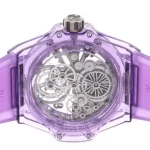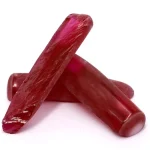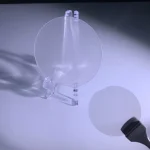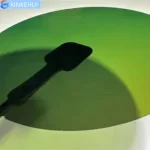You know how wood has a “grain”? Cut with the grain, and it’s smooth; cut against it, and it splinters. Silicon crystals have their own version of “grain” called crystal orientation. It’s one of those invisible details that makes your phone, laptop, and car electronics work. Let’s break it down.
What Exactly Is Crystal Orientation?
At its heart, it’s about direction.
-
Pure silicon isn’t goo – it’s atoms in a grid.
Imagine billions of silicon atoms stacked in a perfectly repeating 3D pattern, like a giant Lego tower. This structure is called a crystal lattice (specifically, a “diamond cubic” lattice). -
“Orientation” means how you slice the crystal.
Think of a loaf of bread. You can slice it:-
Straight down the middle (thick slices),
-
Diagonally (angled slices),
-
Or parallel to the crust (thin, wide slices).
Each cut exposes a different surface pattern.
In silicon wafers, “orientation” refers to the atomic pattern exposed on the wafer’s top surface after slicing the crystal. We describe this using Miller Indices – like (100), (111), or (110). Don’t panic – these are just coordinates for atomic planes.
-
The Big Three: (100), (111), and (110)
Not all surfaces are equal. Here’s how the main players stack up:
-
(100) Orientation: The Workhorse of Modern Chips
-
What it looks like: Atoms are arranged in a symmetrical square grid. Picture a chessboard at the atomic level.
-
Why it dominates:
-
Faster Transistors: Electrons zip across (100) surfaces more easily than holes, perfect for NMOS transistors (the speed demons in logic chips).
-
Smooth Operator: The surface has the lowest density of “dangling bonds” (unhappy atoms at the surface). This makes it easier to grow super-thin, high-quality insulating layers (SiO₂) – critical for MOSFET transistors.
-
Happy with Heat: Grows the most uniform silicon dioxide (SiO₂) layers during oxidation (a key chip-making step).
-
-
Where you’ll find it:
90% of all integrated circuits (ICs): CPUs, GPUs, memory chips (DRAM, Flash), and most sensors. Your smartphone’s brain runs on (100) silicon.
-
-
(111) Orientation: The OG of Semiconductors
-
What it looks like: Atoms form a triangular pattern. Think of a honeycomb, but with triangles instead of hexagons. It’s a denser, more “closed-pack” atomic plane.
-
Strengths & Quirks:
-
Tough as Nails: Forms extremely strong atomic bonds. More resistant to mechanical stress.
-
Oxidation Beast: Grows the thickest silicon dioxide (SiO₂) layers fastest. Historically vital for robust isolation.
-
The Hole Story: Holes (positive carriers) move better here than electrons. Good for PMOS (the other half of CMOS).
-
Rougher Edges: Higher density of “dangling bonds” makes surface passivation trickier than (100).
-
-
Where it still shines:
-
Bipolar Junction Transistors (BJTs): Especially high-power, high-frequency types (like in RF amps). The (111) surface handles high currents well.
-
Thick Oxide Applications: Sometimes used for power devices needing thick insulation layers.
-
Compound Semiconductors: Gallium Arsenide (GaAs) wafers are often (111) for optoelectronics (LEDs, lasers).
-
Legacy & Specialty: Found in older analog chips, some MEMS devices, and niche silicon-on-insulator (SOI) applications.
-
-
-
(110) Orientation: The Niche Performer
-
What it looks like: Atoms form rectangular rows. Imagine corrugated iron roofing, but atomic-scale.
-
The Mobility Advantage:
This is the secret sauce. Holes move significantly faster on (110) surfaces than on (100) or (111). We’re talking 2-3x faster in some cases! -
The Trade-off:
Electron mobility is worse than on (100). It’s also harder to get super-smooth surfaces and perfect oxides compared to (100). -
Killer Application: MEMS
Micro-Electro-Mechanical Systems (MEMS) are tiny moving parts etched into silicon – gyroscopes, accelerometers (the ones that rotate your screen), microphones, pressure sensors.-
Why (110) Wins for MEMS:
-
Crystal Planes Align for Precision Etching: The (110) lattice has crystal planes that meet at perfect 90-degree angles. This allows incredibly sharp, vertical, and predictable sidewalls when you etch deep trenches into the silicon using chemicals (anisotropic wet etching).
-
Speed Where it Counts: Some MEMS sensors benefit from that boosted hole mobility.
-
-
Where it’s used: Almost exclusively in inertial sensors (accelerometers, gyroscopes) and some microfluidic devices. Your car’s airbag sensor and your phone’s step counter likely rely on (110) silicon.
-
-
Why Does Orientation Matter So Much? It’s Physics + Chemistry
-
Carrier Mobility: As mentioned, how easily electrons or holes move changes drastically. This defines transistor speed and power consumption.
-
Surface Chemistry: How atoms bond at the surface affects:
-
Oxide Growth: Thickness, speed, quality (critical for transistor gates & isolation).
-
Etching Behavior: How chemicals attack the surface (vital for patterning circuits and MEMS structures).
-
Defect Formation: Some orientations are more prone to stacking faults or other crystal defects during processing.
-
-
Mechanical Stress: Different planes have different stiffness and fracture toughness. MEMS devices live or die by this.
-
Epitaxial Growth: Growing perfect layers of other materials (like SiGe) on top depends heavily on matching the underlying wafer’s orientation.
How Do We Make These Wafers?
-
Grow the Crystal: Start with a seed crystal dipped into molten silicon. Pull it up slowly while rotating (Czochralski method). The seed’s orientation dictates the entire ingot’s orientation.
-
Grind & Mark: The round ingot gets ground to perfect diameter. A flat or notch is cut into the side – this physically marks the primary crystal orientation (e.g., a notch often indicates the <110> direction on a (100) wafer).
-
Slice & Polish: Wafers are sliced like salami using diamond wires, then polished to an atomic-level smooth finish, revealing the desired crystal plane (100, 111, or 110).
Beyond the Big Three: Off-Cut Wafers
Sometimes, wafers are cut slightly off the exact (100) plane – say, 4° towards <110>. Why?
-
Preventing “Lattice Ladders”: On exact (100), atoms can form perfect terraces during epitaxy, leading to defects. Tilting the wafer breaks up these terraces, leading to smoother, higher-quality grown layers.
-
Essential for: High-performance logic and memory chips using advanced epitaxial layers.
The Bottom Line
Crystal orientation isn’t just academic trivia. It’s a fundamental design choice made before a single transistor is built:
-
Need speed and perfect oxides for billions of tiny logic transistors? -> (100).
-
Building robust power transistors or using GaAs for lasers? -> (111) often plays.
-
Etching deep, precise trenches for motion sensors? -> (110) is your champion.
It’s the unseen atomic landscape that engineers manipulate to make the electronics of today possible. The next time your phone rotates smoothly or your car’s stability control kicks in, remember – it started with how someone decided to slice a crystal of silicon decades ago.








